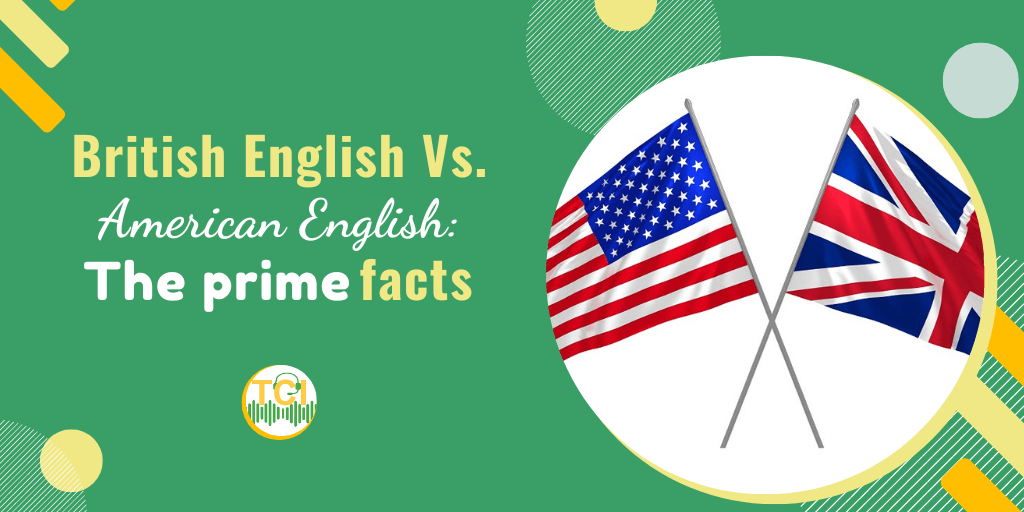
With over 1300 million English speakers worldwide, English is the primary language for business correspondence and communication. With only a limited number of countries using English as the official language, seeing how many people speak it globally is still interesting.
There are many variants of the English language, such as American English, South African English, British English, Indian English, New Zealand English, and Singaporean English, with American and British English being the most widely spoken. Research has shown that American and British English have a few distinctive features with relatively minor differences. If you are in a linguistic profession like transcription, then it’s important to understand these differences. Let’s discuss them in detail.
Though a common language, British and American English differ in spelling, grammar, vocabulary, pronunciation, and format. The several ways in which they differ are:
Although grammar is the central component of a language, it does not control semantics. For instance, when describing a certain concept, one can have a different grammar for different semantic expressions. For instance, the word "shall" is used rarely in American English but is used frequently in British English and is often interchanged with “will.” Some examples of grammatical changes are given below:
American English and British English use different terms and words to imply the same thing.
Understanding the meaning of such words will help you understand the context of the statement, especially when you cannot hear the whole speech clearly.
English has minimal phonetic spelling, meaning the word doesn't always represent the correct pronunciation. In terms of spelling, there are still differences between the two varieties. For instance, in American English, the word "judgement" is spelled as "judgment." However, in British English, "judgement" is spelled similarly. Other similar words include "acknowledg(e)ment," "abridg(e)ment," and "travel(l)ing."
In most cases, British spelling is longer than that of American spelling when it comes to writing a word. For instance, in British English, the verb uses "ise" at the end, while in American English, "ize" Is preferred.
Using the right spelling is as important as using the right grammar in the transcription industry.
The main difference between the two types of English is their pronunciation. The main difference between the two is how one says "r." In British English, “r” is not pronounced when it comes after a vowel (car, bark, pork, etc.) but in American English, it is pronounced. There are also other differences. The British pronunciations are based on the words used in the 14th edition of the English Pronouncing Dictionary, which A.C. Gimson wrote in 1977. The American versions are based on the same words used in the Ninth New Collegiate Dictionary, which was released in 1983.
For example, “niche” is pronounced as “neesh” in British English, but it’s pronounced as “nihtch” in American English. Similarly, “schedule” is pronounced as “SHED-jool’ in British English but as “SKED-jool” in American English.
Identifying the right pronunciation is the most difficult part of transcription. If you don’t know the correct pronunciation of words, then you will most likely type a wrong spelling which may entirely change the meaning of the sentence and that could be catastrophic in this profession.
American and British English have different slang, including certain phrases they use in daily conversation. Non-native speakers will go clueless if hearing them for the first time. Some of the common examples include
You may often be asked to omit slangs while transcribing videos or audios. In such cases, you need to first understand what these slangs are.
In American English, month-day-year refers to the month's arrival before the day itself. On the other hand, in British, Day-month-year is the format. Although ordinals are commonly used in speech, they are not considered essential in American writing.
American: 02/01/22 (February 1, 2022)
British: 01/02/22 (1st February 2022)
In American English, periods and ordinals are placed inside quotation marks if the sentence is complete. On the other hand, in British, they are not included unless the punctuation is part of the sentence.
American English: “This way.”
British English: “This way”.
In American English, periods are placed after abbreviations. On the other hand, in British, they do not put periods after abbreviations.
American English: Dr., Mr.
British English: Dr, Mr
Formatting becomes very important if your aim is to provide ready-to-use transcripts and big companies often have this request.
Although there are differences between British English Vs. American English, they have more similarities. Both Americans and British people can communicate easily. In both countries, several words mean the same thing. However, there are also instances where a completely different word is used. As a professional transcriber, you need to understand these differences in order to create an accurate transcript for your clients.
If you belong to a non-English speaking country and are unsure about your English skills, then you can take our English Test to know where you stand. Conversely, you can directly enroll in our transcription course if you belong to a native-English speaking country. At Transcription Certification Institute (TCI), we offer different lessons that can help you master the art of transcription. We'll give you expert advice and help you find exemplary service for your needs.
To know more about how to become a transcriptionist and work from home, you can refer to these two comprehensive guides:
Your TRANSCRIPTION CAREER CAPSULE to Help You BOOST Your Potential
Latest Industry News, Jobs, Tips and More..

Comments are closed